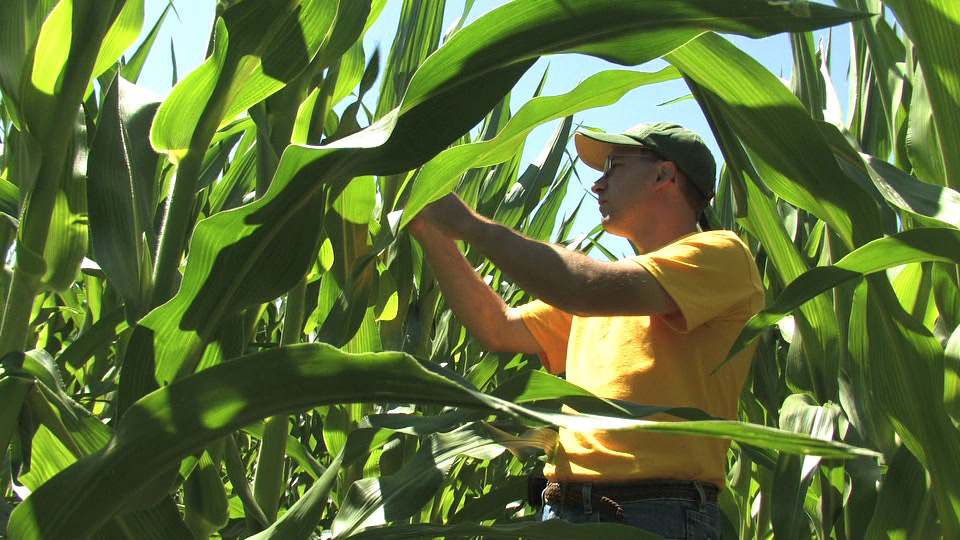
Gray leaf spot is also active in the lower canopy at multiple sites across the state. The lesions are light tan in color and generally narrow and rectangular, and can be as long as 2 inches.

Gray leaf spot is also active in the lower canopy at multiple sites across the state. The lesions are light tan in color and generally narrow and rectangular, and can be as long as 2 inches.

It is time to get out and scout for corn diseases. Even though recent weather conditions have been hot and dry, there are a number of corn diseases emerging in the lower canopy.
2019 Western Bean Cutworm Pheromone Trap Report

The western bean cutworm (WBC) trapping season continues, and after a slow start, moth flights have increased in many northern Indiana county traps this past week.

The beginning of damage to alfalfa leaflets (note yellowing) caused by the potato leafhopper was seen on second harvest.

It seems someone left the oven on, again! Temperatures, so far, for July have been several degrees above normal (Figure 1) and with relatively calm winds and little precipitation, the warm temperatures during the day can feel brutal.

Japanese beetle have been emerging and can be seen throughout the state on corn and soybean plants.

As the growing season progresses, I am getting more questions about insects feeding on hemp.
2019 Western Bean Cutworm Pheromone Trap Report

Tar spot of corn is a new concern this season after the localized epidemics we experienced last year in Indiana.
© 2026 Purdue University | An equal access/equal opportunity university | Copyright Complaints | Maintained by Pest&Crop newsletter
If you have trouble accessing this page because of a disability, please contact Pest&Crop newsletter at luck@purdue.edu.